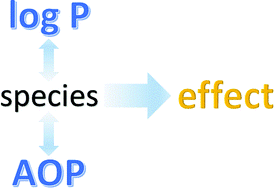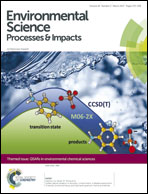(Q)SARs to predict environmental toxicities: current status and future needs
Abstract
The current state of the art of (Quantitative) Structure–Activity Relationships ((Q)SARs) to predict environmental toxicity is assessed along with recommendations to develop these models further. The acute toxicity of compounds acting by the non-polar narcotic mechanism of action can be well predicted, however other approaches, including read-across, may be required for compounds acting by specific mechanisms of action. The chronic toxicity of compounds to environmental species is more difficult to predict from (Q)SARs, with robust data sets and more mechanistic information required. In addition, the toxicity of mixtures is little addressed by (Q)SAR approaches. Developments in environmental toxicology including Adverse Outcome Pathways (AOPs) and omics responses should be utilised to develop better, more mechanistically relevant, (Q)SAR models.

- This article is part of the themed collection: QSARs and computational chemistry methods in environmental chemical sciences


 Please wait while we load your content...
Please wait while we load your content...